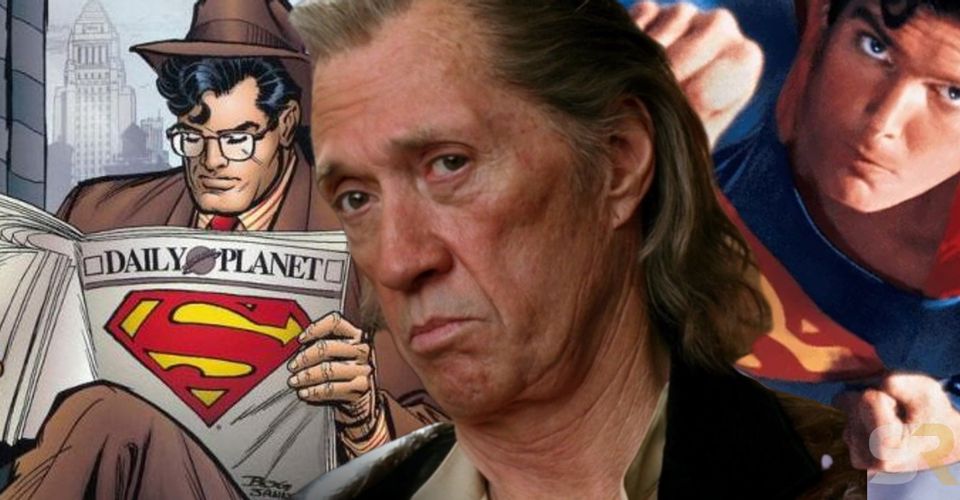What Quentin Tarantino Gets Wrong About Superman In Kill Bill

Quentin Tarantino’s famous Superman monologue in Kill Bill: Volume 2 doesn’t actually get Superman right. While it’s a fitting moment for David Carradine’s Bill and serves as a great narrative moment, Bill’s understanding of Superman and Clark Kent and the way they relate to the world isn’t consistent with the more common depictions of the character.
In one of the most memorable moments in Kill Bill: Volume 2, an injured Beatrix Kiddo, played by Uma Thurman listening to Bill’s monologue about the nature of superheroes, in particular, Superman. Bill reflects on how Superman is different from other heroes and how his alien origin play into that difference, but Bill’s preferred version of the character comes from an era that may be at odds with more common interpretations of Superman.
What Bill Thinks About Superman

Bill starts off the speech comparing Superman to the other two most popular heroes of our time, Batman and Spider-Man. He goes on to say that unlike Batman and Spider-Man, who have to put on a costume to become their heroic selves, they will always be Bruce Wayne and Peter Parker at their core. Superman, on the other hand, does not abide by these same conditions. According to Bill, Superman wakes up being Superman and the Clark Kent persona is his mask. Everything Clark Kent represents is Superman’s view of the human race as a whole. Bill believes Superman’s purposeful portrayal of Clark as weak, unsure of himself and as a coward makes him “Superman’s critique of the whole human race.”
While this monologue makes for a fantastic scene and works well for the film itself, it is not totally accurate when looking at the Superman character. Bill’s reasoning for this aspect of Superman can come from a variety of different places. While an explicit date is never mentioned, the technology and car designs all bear a 1990s-early 2000s aesthetic. Assuming Superman remains a constant in the film like in reality, it is assumed that the Christopher Reeve’s Superman films, the George Reeves’ television series, and all comics and interpretations before this time are valid. The next thing to consider is Bill’s age. The character is definitely older and thus his perception of Superman should follow that. David Carradine was 67 years old when shooting the film. This would mean Bill would have primarily based his idea of Superman from the 1940s and 1950s.
The 1940s and 50s were right on the cusp of the Silver Age in DC Comics. The Golden Age Superman was primarily shown in Adventures of Superman television series starring George Reeves. The series ran from 1952-1958 and would squarely put it in Bill’s younger years. Taking a look at the theme song of the series, the narrator describes Superman as “Yes, it is Superman, strange visitor from another planet, who came to Earth with powers and abilities far beyond those of mortal men. Superman, who can change the course of mighty rivers, bend steel in his bare hands, and who, disguised as Clark Kent, mild-mannered reporter for a great metropolitan newspaper, fights a never-ending battle for truth, justice, and the American way.” The key phrase being “disguised as Clark Kent, mild-mannered reporter…”
Assuming Bill grew up with the popular series, it would make sense that he would take this interpretation as truth. Additionally, The Adventures of Superman radio serial which ran from 1940 to 1951 did not even have the Kent family as a part of Superman’s story and doubled down on the alien aspect of the hero. During this serial, Superman matured to adulthood on the ride from his spaceship to Earth and immediately began life as a Superman and somehow decided on becoming a mild-mannered reporter. If these two versions of Superman are any indication, Bill’s theory on Superman holds some validity. The Golden Age Superman is very much Superman first and Clark Kent second. While Bill would be correct using this small sample size of Superman as his reasoning, it’s not consistent with the wider history of the character.
Why Clark Kent Isn’t Really Superman’s Secret Identity

The truth to Superman’s character is in his history. The common Superman origin story has him sent as an infant to Earth from Krypton as it explodes. He lands in Smallville, Kansas and is found and adopted by Jonathan and Martha Kent. When Kal-El lands on Earth, he doesn’t know about his powers, his history, or even his birth parents. Throughout Clark’s early and teenage years, he is just Clark, not Superman. His truth is not revealed to him until well into his teens and he lives this portion of his life simply seeing himself as a human. All of Superman’s core beliefs, hopeful nature and need to help others comes from his upbringing from Ma and Pa Kent. The three most popular Superman interpretations support this notion.
Christopher Reeve has become synonymous with Superman and Richard Donner’s Superman films are considered some of the greatest in film history, and rightfully so. Donner took the mythology of Superman more seriously than the Silver Age comics of the time allowed. What seems campy by today’s standard was considered a serious and faithful interpretation at release. In 1978’s Superman: The Movie, Richard Donner established the importance of Jonathan and Martha Kent.
Following the death of Jonathan, Clark went on a journey to find his purpose and eventually reunited with his birth father in Jor-El. After Clark’s time with Jor-El, he emerged as Superman and the film cut to Metropolis. There, the mild-mannered reporter Clark Kent made his appearance. That Clark Kent was definitely a disguise with his hunched stature, clumsy demeanor and a bumbling goofiness. But once again, that was not the actual Clark Kent. The Reeve movies do show the true Clark Kent in bursts, specifically in Superman II after he reveals his identity to Lois. Even Superman III, which had Clark reconnect with his Smallville roots, showed the Clark Kent persona he truly embodies when he interacted with his high school friend Lana Lang. Gone was the clumsiness and the act he put on at the Daily Planet and in came the more serious, introverted farm boy who only wanted to fit in with his classmates.
In 1996, Superman: The Animated Series doubled down on the notion that Clark Kent is the true self of Superman. The series took a much more modern approach to the character, taking cues from John Byrne’s work with Superman in the comics. Superman was much more interested in being a reporter here. No longer was this just a disguise to keep an eye on disasters; Clark genuinely wanted to be the best reporter at the Daily Planet and had a rivalry with Lois Lane to be the best at it. This interpretation spelled out who the disguise and true self was in seasons 2, episode 22, “The Late Mr. Kent.” In this episode, Clark Kent is “killed” by a corrupt detective as he was investigating the truth behind a man on death row who claimed he was innocent. With Clark Kent presumed dead in a car bomb, Superman can no longer assume the persona in public. He goes back home to Jonathan and Martha Kent where he says “But I am Clark. I need to be Clark. I’d go crazy if I had to be Superman all the time!” This iteration of Superman continued in Justice League and Justice League Unlimited and continues to be the most comprehensive Superman adaption to date.
2013’s Man of Steel was the next Superman interception to tackle this question. Zack Snyder’s grounded take on the character continued with the Post-Crisis opinion on the Clark Kent/Superman dynamic. Once again, Clark Kent was not told of his true origin until his teens and much like the STAS Superman did not take the news lightly. Clark wants to just be a normal human being who lives a normal life. Additionally, Clark Kent was helping people before he finally put on the costume. Recounted by Lois, Clark was sighted in multiple places throughout the years saving others in danger. When he finally does become Superman, his Clark Kent self still remained at the core. His pure anger after seeing Zod threaten his mother was as a human of an emotion as it gets. Batman v Superman: Dawn of Justice continued this trend by showcasing Clark Kent’s actual interest in being a reporter. His need to investigate Gotham City and Batman had nothing to do with being Superman, and everything to do with being the best possible reporter and caring about actual people and stories.
Does Quentin Tarantino Believe Bill On Superman?

As established above, Bill’s view of Superman could be attributed to his age and what Superman was like during his own childhood and formative years. For Tarantino, this would be slightly harder to line up as he was only 41 years old when Kill Bill: Volume 2 released. This would put him squarely in the era of Christopher Reeve’s Superman. If Quentin Tarantino believes Clark Kent is the disguise and Superman only uses that disguise to critique humanity, it definitely leans towards the Golden Age interoperation and a Superman philosophy that is more alien than human. Given that Bill is the primary antagonist of this franchise, Quentin Tarantino might be showing how even villains can find ways to connect to our greatest heroes.
About The Author

















